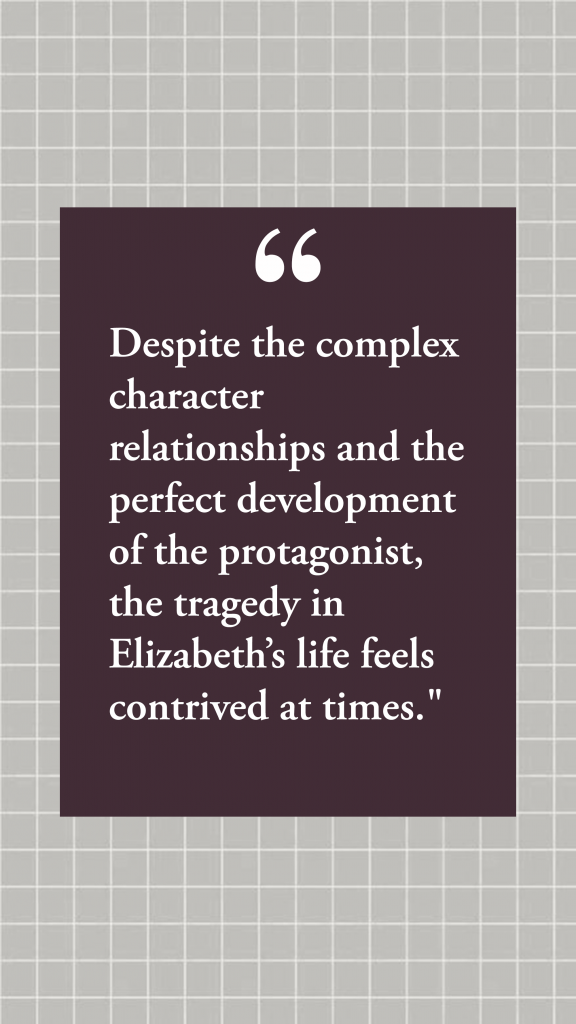Sofia Lyon
Arts & Entertainment Editor
In just a few weeks, Netflix’s newest miniseries, “The Queen’s Gambit,” quickly rose to a top position on the platform’s trending list. The show details the story of Elizabeth Harmon, a gifted chess player, and her rise to the role of a grandmaster. We follow her from her tumultuous childhood in an orphanage to playing competitive chess all over the world, and through drugged-out sexual antics. Set in the backdrop of Cold War America in the mid-1950s into the early 1960s, the show offers an aesthetically pleasing visual experience alongside masterful and subtle cinematography.
This show excels in its production design and visual storytelling. From the costuming to the set design, the world is vivid and intricately built. The show utilizes its graphics to visualize Beth’s mental chess process, inviting the audience into the complex mind of a competitive chess player. The color palette throughout the series is dulled out, creating a world that mirrors Beth’s own stoicism. Costuming is another one of the show’s strong suits: the fashion trends from the 1950s subtly transform into the mod fashion of the early 1960s, showcased entirely through Beth’s own wardrobe.
“Set in the backdrop of Cold War America in the mid-1950’s into the early 1960’s, the show offers an aesthetically pleasing visual experience alongside masterful and subtle cinematography.”
“The Queen’s Gambit” features many dimensional, complicated characters alongside developed and unique relationships between them. Beth’s relationship with the orphanage janitor, Mr. Shaibel, sets a precedent for emotional and profound relationships. All of her significant relationships develop gradually, where despite Beth’s stoic demeanor, the genuine intimacy between characters is palpable.
Similarly touching are her relationships with Jolene, a childhood friend from the orphanage, and Marielle Heller, her adoptive mother. The latter is especially unique: Marielle never quite absorbs a conventional parental role with Beth since Beth was 15 years old at the time of her adoption. Rather, the two women are companions who travel together in pursuit of Beth’s prosperous chess career.

Despite the complex character relationships and the perfect development of the protagonist, the tragedy in Elizabeth’s life feels contrived at times. This is a conflicting observation, as the thread through the series involves her either being used or facing consistent loss, which does ultimately progress her character development. Her losses are, of course, contrasted against her chess life, in which she rarely loses. While this juxtaposition is clever, the misery in some instances feels unwarranted, almost as though the writers simply wanted her to suffer unnecessarily.
Another notable and potentially problematic aspect of the show’s writing is the inevitable influence of the male gaze. Beth’s descent into alcoholism feels similarly contrived as the aforementioned tragedies, however the depiction of her at “rock bottom” mostly consists of clips of her drinking, smoking, and dancing around her living room in her underwear. While this period is the culmination of Beth’s lifelong traumas and stressors, the representation of it feels less like a drudge of misery and more like a ’60s-style celebration.
““The Queen’s Gambit” ultimately succeeds in telling a compelling, unique story dealing with a more obscure subject matter. It features complex characters, an impeccably constructed set, and hits emotional levels one might not expect from a show about competitive chess.”
Had her descent been shown in a more realistic, unattractive way, it may have been more effective. Regardless, the series is able to hit many successful emotional points and does achieve in investing the audience into its characters’ lives. Again, the way the relationships are depicted is perhaps its strongest tool in doing so.
“The Queen’s Gambit” ultimately succeeds in telling a compelling, unique story dealing with a more obscure subject matter. It features complex characters, an impeccably constructed set, and hits emotional levels one might not expect from a show about competitive chess. As an easily bingeable weekend show, “The Queen’s Gambit” is certainly worth the watch.











